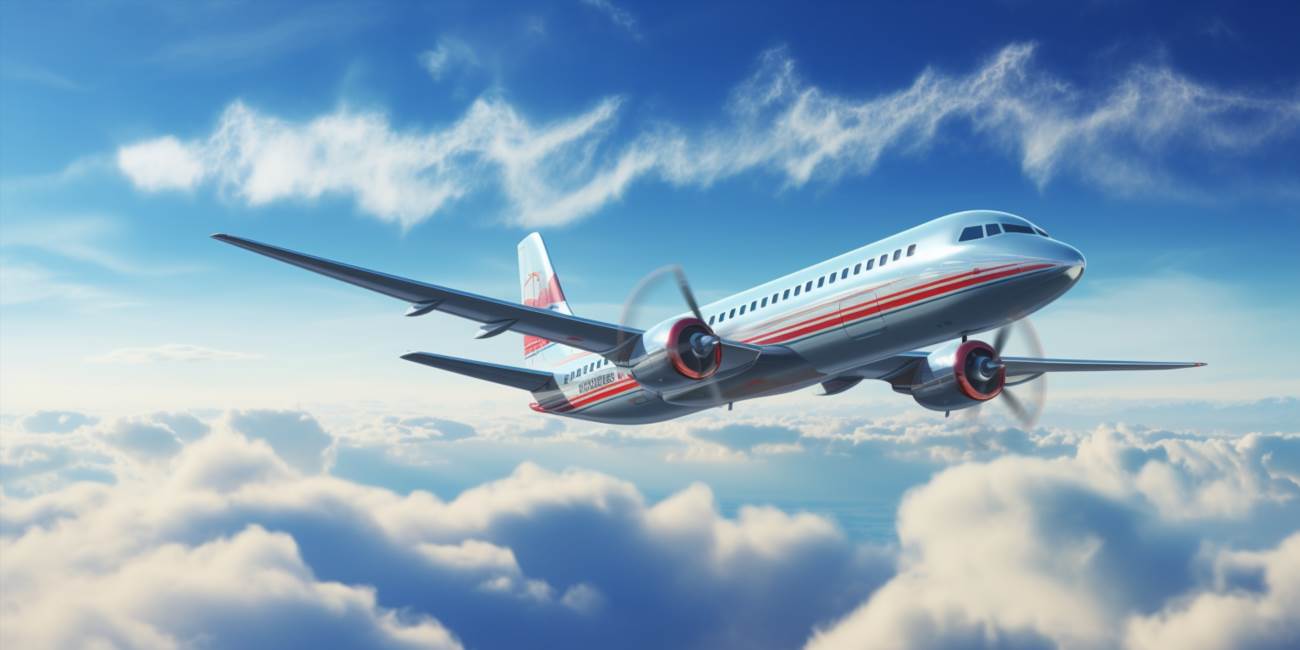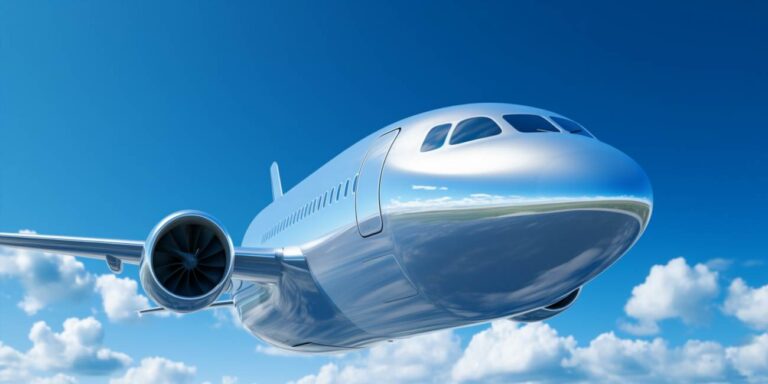One of the key features of aircraft fairings is their sleek, smooth contours that help minimize air resistance. By covering irregularities or gaps in the aircraft’s structure, fairings contribute to a more streamlined shape, allowing the air to flow smoothly over the surface. This results in a significant reduction in drag, which is essential for achieving higher speeds and fuel efficiency.
The benefits of incorporating fairings into aircraft design are manifold. First and foremost, they enhance the aerodynamic efficiency of the aircraft, leading to improved fuel economy. The reduction in drag means that the engines need to work less to maintain a certain speed, ultimately saving fuel and reducing operational costs.
Furthermore, fairings contribute to the overall safety and stability of the aircraft. By reducing drag and optimizing airflow, they help mitigate the impact of turbulent air, especially during takeoff and landing. This enhances the overall control and maneuverability of the aircraft, providing a smoother and safer flying experience.
There are several types of fairings used in aircraft design, each serving specific purposes. Wing fairings, for instance, are located at the junction between the wings and the fuselage, streamlining the airflow over this critical area. Landing gear fairings cover the exposed landing gear components, reducing drag and improving overall aerodynamics during flight.
Another noteworthy type is the engine nacelle fairing, which surrounds the aircraft’s engines. These fairings are meticulously designed to reduce drag associated with the engine components, contributing significantly to fuel efficiency. The tail cone fairing, positioned at the rear of the aircraft, further optimizes airflow and reduces drag, enhancing stability during flight.
Key features and benefits of using fairings on aircraft
Fairings on aircraft play a crucial role in enhancing aerodynamics, fuel efficiency, and overall performance. These aerodynamic shields are designed to minimize drag and turbulence, contributing to smoother flights and reduced fuel consumption. Let’s delve into the key features and benefits of incorporating fairings in aircraft design.
One of the primary advantages of aircraft fairings is their ability to reduce drag. By strategically placing these streamlined structures on the wings, fuselage, and other exposed surfaces, engineers can effectively minimize air resistance. The smooth contours of fairings redirect airflow, preventing turbulence that can impede the aircraft’s forward motion.
Enhancing fuel efficiency is a paramount goal in aviation, and fairings play a pivotal role in achieving this. The reduction in drag directly translates to lower fuel consumption as the engines operate more efficiently. Airlines are continually seeking ways to optimize their fuel usage, making fairings a crucial component for achieving sustainability in aviation.
Moreover, fairings contribute to the overall aesthetic appeal of an aircraft. Beyond their functional benefits, these streamlined additions give airplanes a sleek and modern appearance. Airlines often prioritize the visual aspect of their fleet, and fairings provide a means to achieve both form and function.
When it comes to noise reduction, fairings play a surprising role. The streamlined design not only cuts through the air more efficiently but also minimizes the production of unwanted noise. This is particularly important in urban areas and near airports, where noise pollution is a growing concern.
Structurally, fairings provide an added layer of protection to various components of the aircraft. By covering exposed sections, they shield sensitive parts from environmental factors such as rain, hail, and debris. This contributes to longer aircraft lifespan and reduces maintenance costs associated with weather-related wear and tear.
| Feature/Benefit | Description |
| Drag Reduction | Minimizes air resistance for smoother flights. |
| Fuel Efficiency | Optimizes engine performance, leading to lower fuel consumption. |
| Aesthetic Appeal | Enhances the visual appearance of the aircraft. |
| Noise Reduction | Minimizes unwanted noise during flight. |
| Environmental Protection | Shields aircraft components from weather-related damage. |
Main types of fairings used on aircraft

When it comes to aircraft design, the utilization of fairings plays a crucial role in enhancing both aerodynamics and aesthetics. These streamlined components come in various types, each serving a specific purpose in optimizing the aircraft’s performance. Let’s delve into the main types of fairings used on aircraft, including structural, antenna, fillets, dorsal, and nose cone.
Structural fairings are essential elements that serve a dual purpose in aircraft design. Not only do they contribute to the overall aerodynamic efficiency by reducing drag, but they also play a vital role in reinforcing the structural integrity of the aircraft. These fairings are strategically placed to smooth out irregularities and joints in the aircraft’s structure, minimizing air resistance and providing a sleek appearance.
On the technological front, antenna fairings play a pivotal role in ensuring effective communication and navigation for modern aircraft. Concealing antennas within fairings helps maintain the aerodynamic profile of the plane while facilitating optimal signal reception and transmission. The integration of these fairings is crucial for seamless connectivity, especially in today’s aviation landscape where communication is paramount.
For the purpose of minimizing interference and enhancing the overall aerodynamic performance, fillets are employed in aircraft design. These fairings are strategically placed in areas where different surfaces meet, such as the junction between the wings and the fuselage. By smoothing out these transitions, fillets contribute to the reduction of drag, improving fuel efficiency and overall flight dynamics.
Addressing the rear end of an aircraft, we encounter the significance of dorsal fairings. Positioned along the dorsal fin, these fairings not only contribute to the aircraft’s stability but also play a role in reducing turbulence. By streamlining the airflow over the dorsal section, these fairings enhance the overall performance and handling of the aircraft, especially during challenging weather conditions.
Finally, the nose cone fairing takes center stage at the front of the aircraft. Beyond its aesthetic appeal, the nose cone serves a critical aerodynamic function. Its streamlined shape reduces air resistance, allowing the aircraft to cut through the air more efficiently. Additionally, the nose cone provides housing for various instruments and systems, showcasing the seamless integration of functionality and design.
Benefits of fairings for improved aircraft performance
Fairings play a crucial role in enhancing aircraft performance by optimizing aerodynamics. These streamlined structures are strategically designed to minimize drag, thereby positively impacting thrust and fuel efficiency.
One of the primary benefits of fairings is their contribution to improved lift. By reducing drag, fairings allow the aircraft to achieve better lift-to-drag ratios, resulting in enhanced overall lift. This is particularly significant during takeoff and climb phases, where increased lift is essential for a smooth and efficient ascent.
The streamlined shape of fairings is specifically tailored to reduce the resistance encountered by the aircraft during flight. This reduction in drag has a direct impact on thrust requirements. With less resistance to overcome, the engines can operate more efficiently, translating to improved propulsion and overall thrust.
Besides positively influencing thrust, fairings also contribute to enhanced fuel efficiency. Drag is a major factor influencing fuel consumption, and by minimizing it, fairings play a pivotal role in conserving fuel. The streamlined design helps the aircraft move through the air with less resistance, requiring less power and fuel to maintain a given speed.
Furthermore, fairings are not a one-size-fits-all solution; their design is often customized based on the specific requirements of the aircraft. This tailored approach ensures that the fairings complement the aerodynamic profile of the aircraft, optimizing performance across a range of flight conditions.






